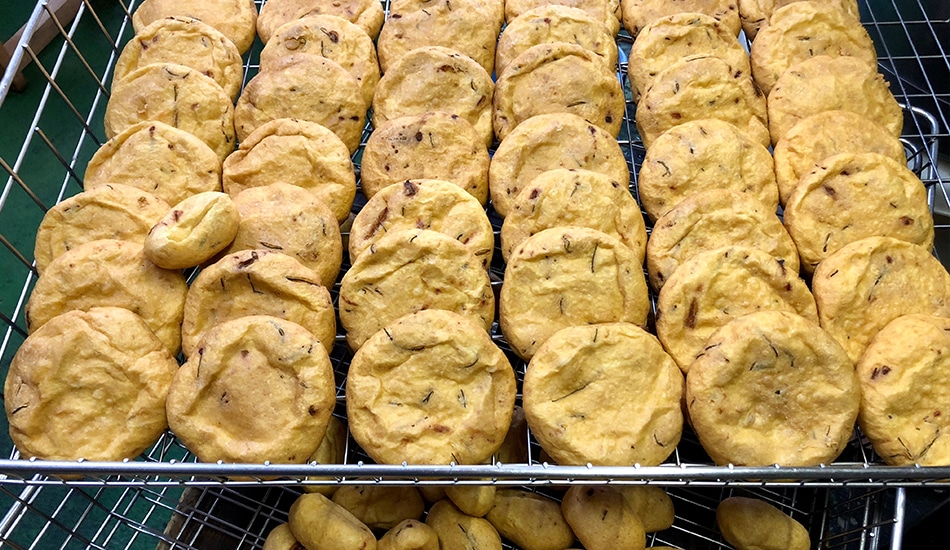Tofu Tradition and Renewal at Tofudokoro Sugihara
Published: February 25, 2020
The Kiyosumi-shirakawa area of Koto-ku is a marvelous amalgam of the old and the new. Ancient temples, shrines, and gardens jostle with cutting edge cafes, art book shops, galleries, wine bars, chocolatiers, furniture shops, and many more. The tree-lined Shiryokan Street is home to the Fukagawa Edo Museum, kimono shops, izakayas, cafes, tea houses, and also the tofu shop Sugihara, currently run by third-generation proprietor Mr. Yoshifumi Kaneko. On a recent fine spring morning we dropped in to talk tofu with Mr. Kaneko and his charming family.
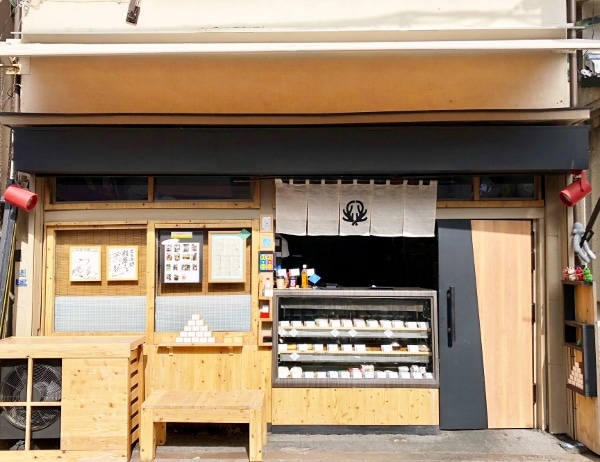
Opened in 1946, the shop curtain features the emblem of the Sugihara family. The attractive wooden shop front showcase features the tofu and tofu-based products made by Mr. Kaneko every day, using a variety of soybeans and bittern (nigari), the distilled seawater coagulant used to bind the soy milk.
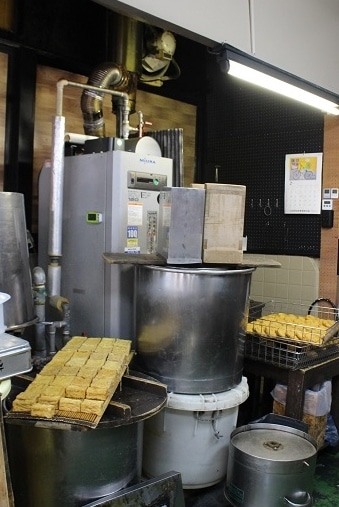
To say that Mr. Kaneko is enthusiastic about tofu would be a gross understatement. His passion for the bean-based foodstuff is astonishing, especially considering he’s a relative newcomer to the business. “I worked in the automobile business for many years then stepped in here after my father-in-law was indisposed through illness,” he explains.” I never realised how much I could enjoy actually making things, researching, and planning new products or designing the packages. It’s been a revelation to me.”
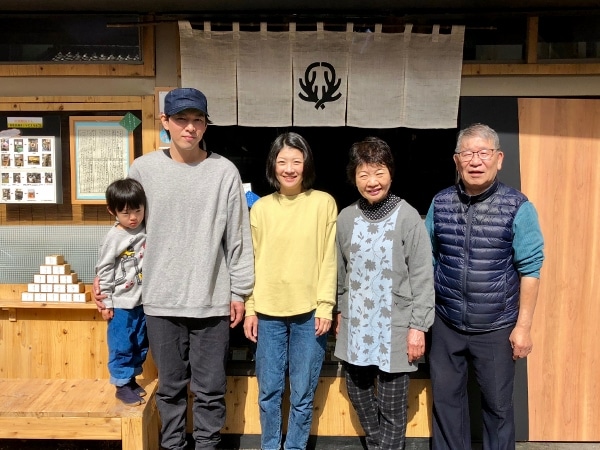
From left: Aoi, the youngest member of the family at four years old, Mr. Kaneko, his wife Kazue, her mother Chiyoko and her husband Toshio, the second-generation proprietor.
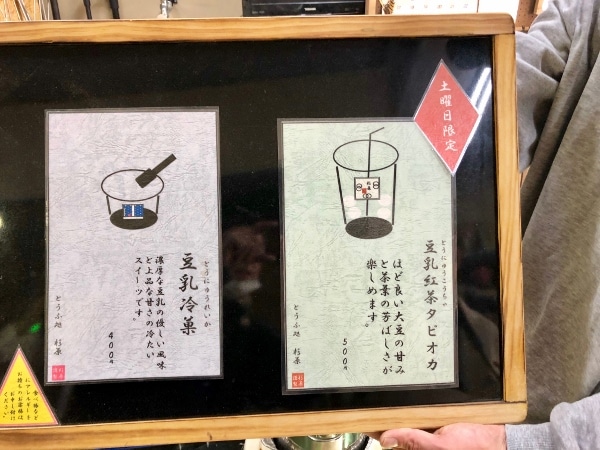
While Mr. Kaneko follows the traditional methods of tofu making, he is also attempting something of a revolution by creating new products. Last summer he created and sold a soy milk tapioca drink, together with a dessert made from yuba (“skins” that form on the surface of gently heated soy milk) and served with brown sugar syrup.
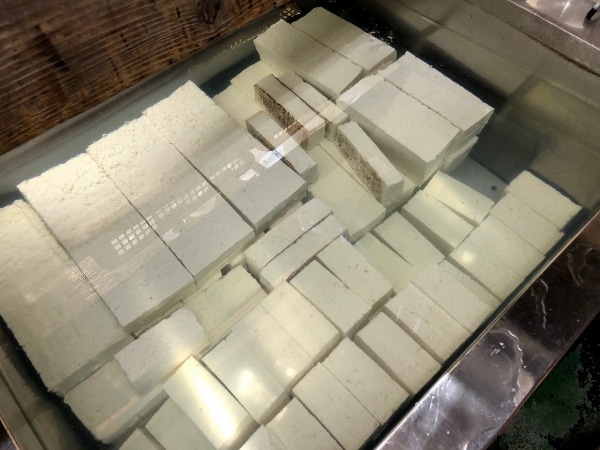
It’s hard work though. “We’re up at 5am every day,” says Mr. Kaneko. “Firstly, I turn the soybeans into soy milk and then make around 200 blocks of tofu (ganso nadai in Japanese).
For the cotton tofu (momen) we use sato no hohoemi, a very reliable soybean type from Miyagi Prefecture, while the silken tofu (kinu in Japanese) is made from slightly sweet osuzu beans grown in Aomori Prefecture.”

Mr. Kaneko is in his element now and launches into a dizzying catalogue of soybeans and their various individual characteristics. He uses 15 different varieties of beans, together with four kinds of bittern (nigari) to make tofu. Atop the soybean pyramid sit the elegant, refined osodefuri beans from Hokkaido, used at New Year and in early spring to make yuba and other special items. Other beans such as toyomusume from Hokkaido, tamahomare from Shiga and miyagishirome from Miyagi prefecture are used in rotation with different bitterns to create unique types of tofu.
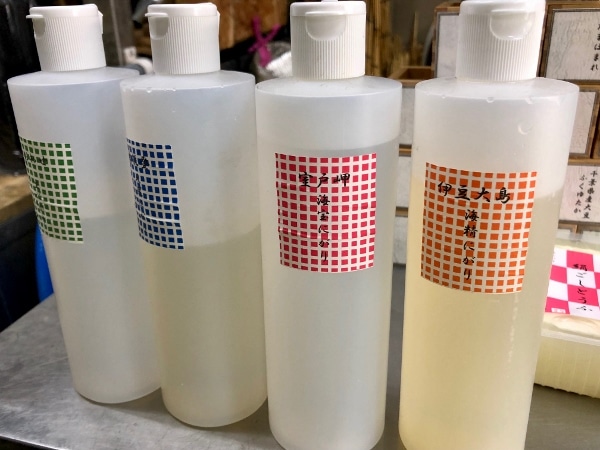
As he explains it, soybeans have a “terroir” like grapes or tea, which imbues them with unique characteristics, suitable for different products. Mr. Kaneko also uses four types of bittern, all of which have differing mineral content. Two are produced in Izu Oshima and Mie, while the other two are trade secrets!
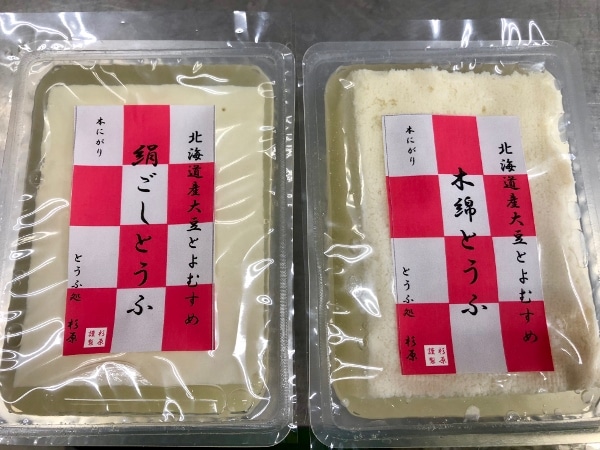
Not only has Mr. Kaneko learned how to make tofu by intense study coupled with trial and error, he has also become a package designer. This tofu, made from the Hokkaido soybean type toyomusume, features a traditional checkerboard pattern known as “Ishimatsu moyo.” The pattern can be seen in the logos for the 2020 Tokyo Olympics but here Mr. Kaneko has used pink, as “musume” in toyomusume means daughter in Japanese.
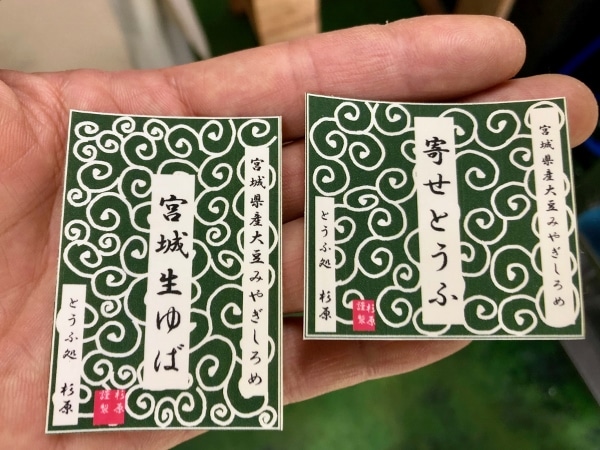
This rather fetching design will be used for tofu and yuba products made with beans from Miyagi Prefecture in north-west Japan.
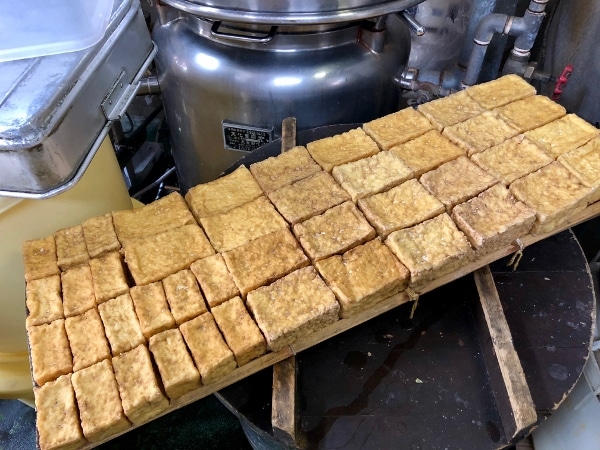
Tofu made for deep-frying (atsuage and aburaage) uses high-protein fukuyutaka beans from Chiba Prefecture.
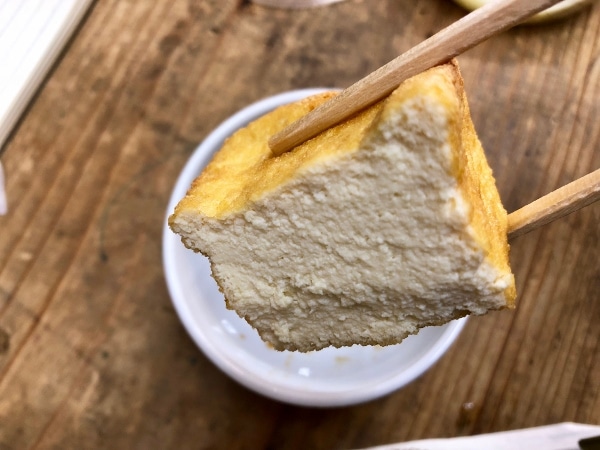
The deep-fried blocks have a rich, beany flavour that is light-years away from standard supermarket fare. The outer skin is crispy, while the inside has a grainy, chewy texture. There’s simply no comparison; once you’ve eaten top quality tofu such as this, it’s very hard to eat anything else.
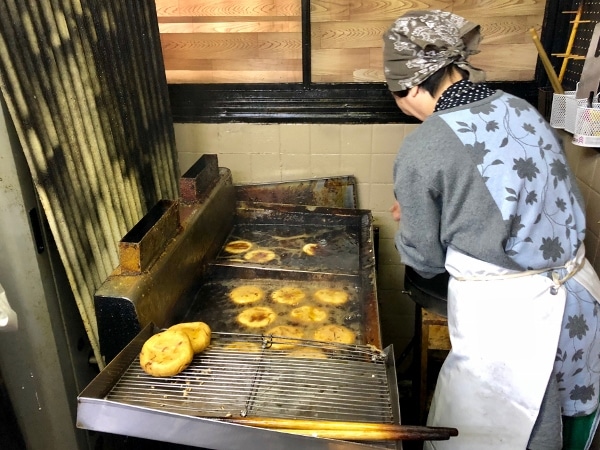
Mrs. Sugihara fries up some tofu fritters, known as ganmo in Japanese. They contain tofu, carrot, kelp and a kind of yam called yamato-imo. Mrs. Sugihara is most insistent on the type of yam. “Yamato-imo has a strong flavour and is the best for making ganmo. Ours is sourced from Chiba Prefecture,” she explains.
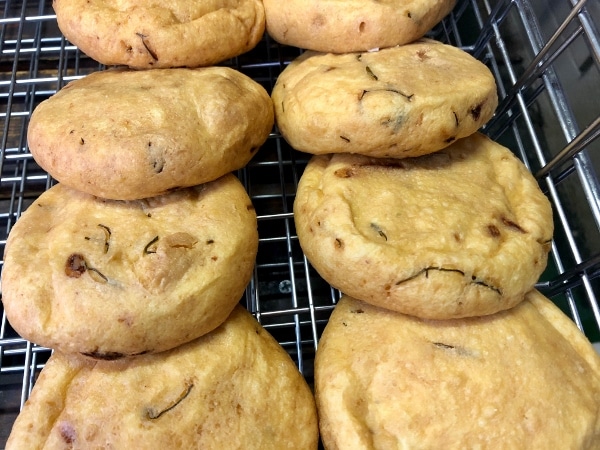
We tried some of the piping hot ganmo. They’re fantastically tasty, hearty and filling yet light. The early bird catches the ganmo, so to speak, as they sell out pretty quickly. The kindly Mrs. Sugihara will pop a couple in the microwave for later customers. Who needs meat when you’ve got soybeans?
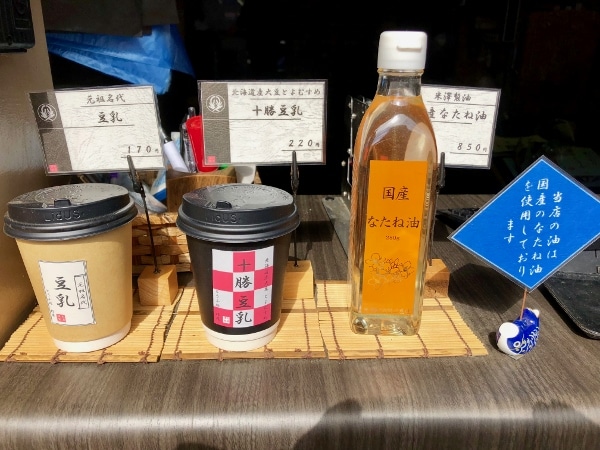
The secret is in the top-quality ingredients, the skill of the artisans and the high-grade rapeseed oil used for frying. The oil is also available for purchase at Tofudokoro Sugihara.
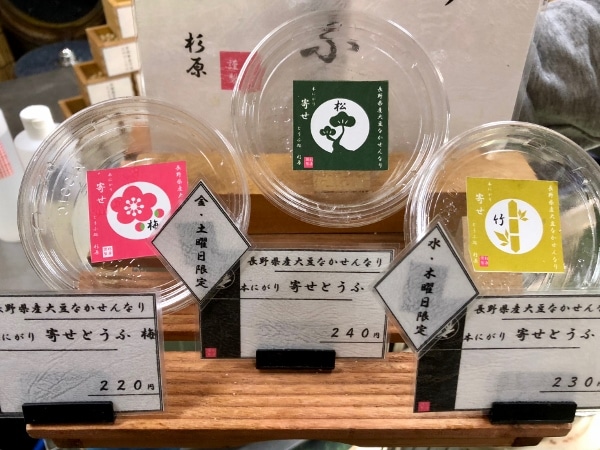
While all tofu products can be enjoyed with soy sauce, Mr. Kaneko recommended his tofu be eaten without, to appreciate the full taste of the beans. He also suggested a touch of salt. “I recommend eating yose tofu (a very soft tofu not firmed into blocks) with olive oil and salt, while our limited-edition white sesame tofu is best with a touch of salt. The limited-edition black sesame tofu goes well with grated wasabi and soy sauce,” he advises.

Tofudokoro Sugihara sells a large number of seasonal products, as well as rotating the soybeans used to make different kinds of tofu. He advises just dropping into the shop and asking what’s fresh on any given day. The ever-inventive Mr. Kaneko is currently dreaming up new products, such as tofu donuts. With his burning enthusiasm and the great support of his warm, friendly family one is sure they’ll be just as exceptional as the unbeatable soy bean splendors he’s now crafting.
Story and photographs by Stephen Spencer

